Do you know what the shortest form of poetry in the world is? It is the haiku, a three-line poem of only 17 syllables (5-7-5) that describes a natural scene or a scene from daily life.
It usually includes one seasonal word called “Kigo” (季語). Currently, there are more than 5,000 seasonal words. Seasonal words are the words that symbolize each season. They can evoke a scene with just one word, and they add depth to the expression, allowing the reader to enjoy and feel the change of the seasons. My mother has been writing haiku for a long time, so I am familiar with this beautiful Japanese tradition. Since it’s in the middle of the autumn season now, in this issue, I would like to introduce some of my favorite beautiful autumn words.
Aki takashi (秋高し): Autumn is high
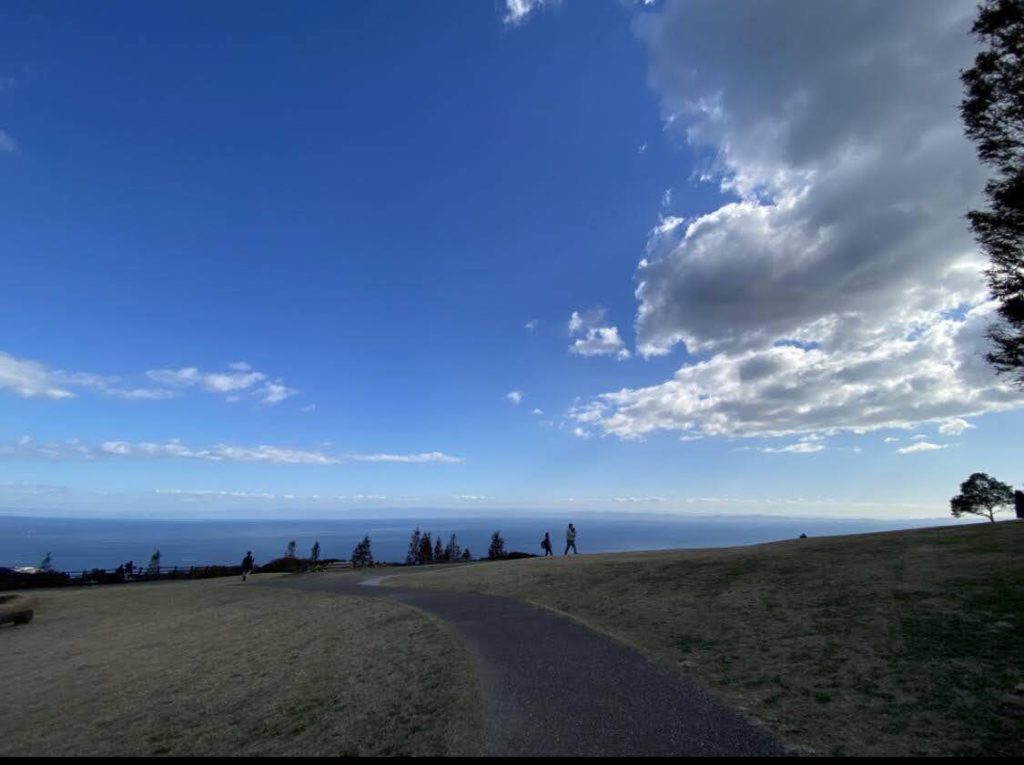
This word describes how the clear autumn air makes the sky seem higher. It is a seasonal term used around the end of October, when the sky is clear after the heat of summer.
Yama yosoou (山粧う): Mountain Dresses Up
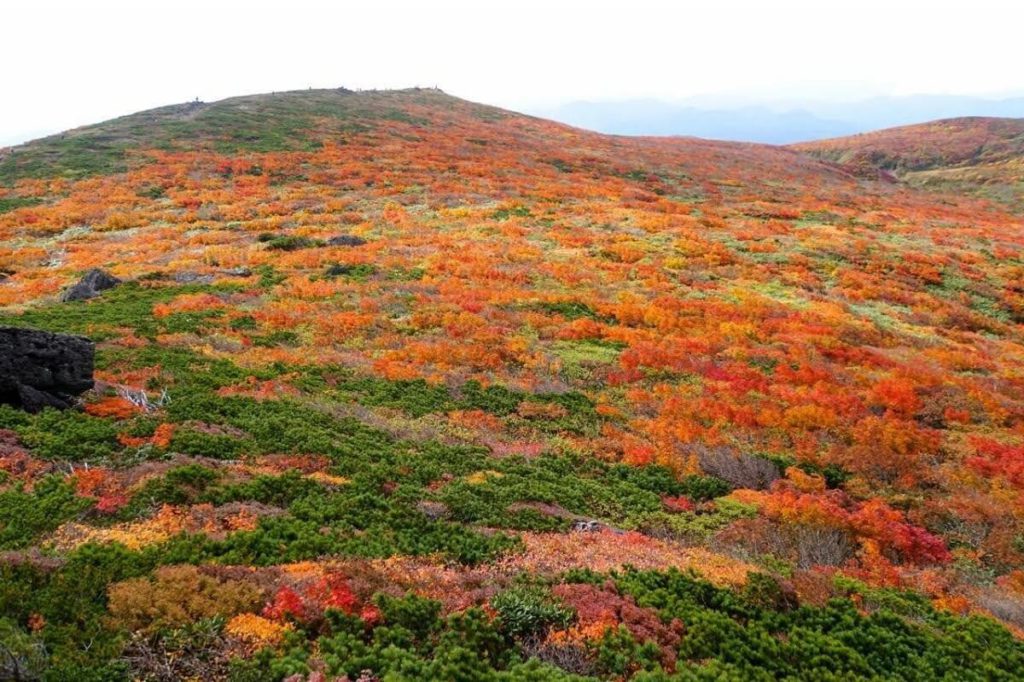
This means that the mountains in autumn are decorated with colorful autumn leaves. The characters literally mean “the mountains have been dressed up with autumn leaves,” and it tells an emotional story to describe the autumn mountains. The autumn mountains are gradually changing its color from deep green to yellow, red, brown, and so on. It’s as if a woman would add her accessory on her dress, put makeup on, or wear a scarf to decorate her daily fashion, etc.
Aki-urara (秋麗): Beauteous Autumn

“Aki-urara” is a seasonal word that refers to the pleasant, clear autumn weather. The sound of the word “aki-uraraka” evokes the image of a clear, beautiful sky. The word “urara” (うらら) and “uraraka” (うららか) brings a sense of calmness.
If you read my previous article, you can get why a white pomeranian dog is in the caption picture. This is my dog whose name is Urara.
Iwashi-gumo (イワシ雲):Sardine Cloud
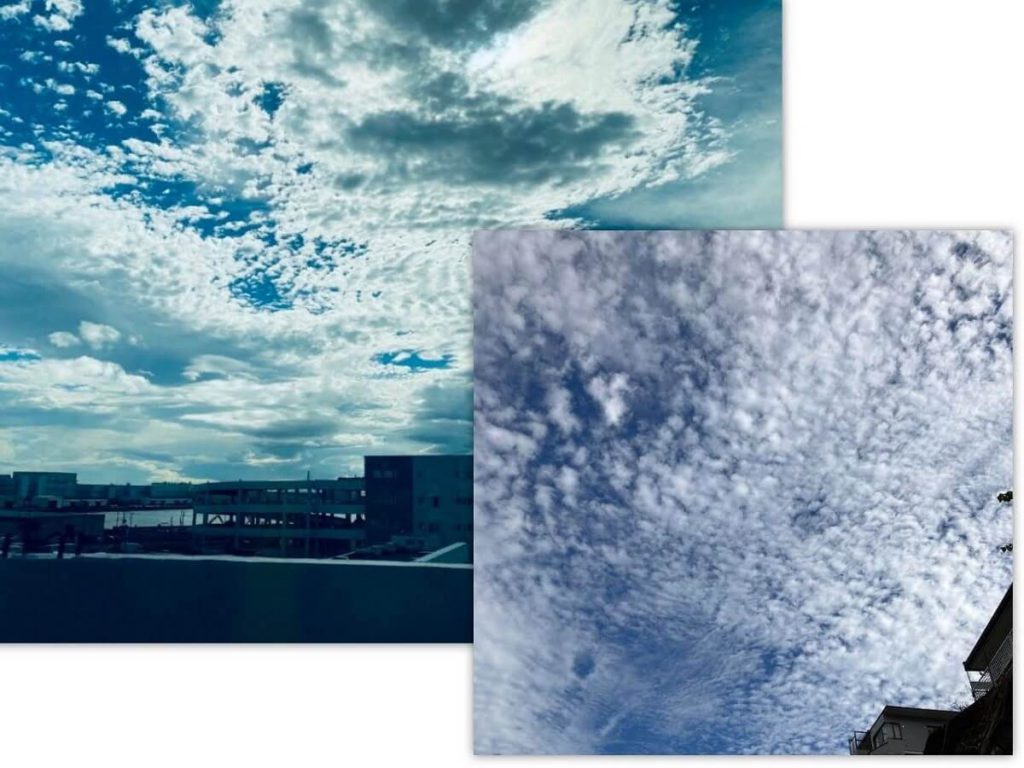
Sardine clouds are clouds that look like a crowd of sardines, with numerous small clouds spreading across the sky. These clouds are also called “scaly clouds” because they resemble fish scales. In ancient times, when these clouds appeared, it was said that schools of sardines were coming.
Fuyudonari (冬隣り): Next to Winter

This title indicates that winter is just around the corner. The character for “tonari,” which literally means next door, was actually added to each of the four seasons to create this seasonal title. The word “next to winter” suggests a sense of being prepared for the cold and severe season.
Chusyu (仲秋): Mid-Autumn
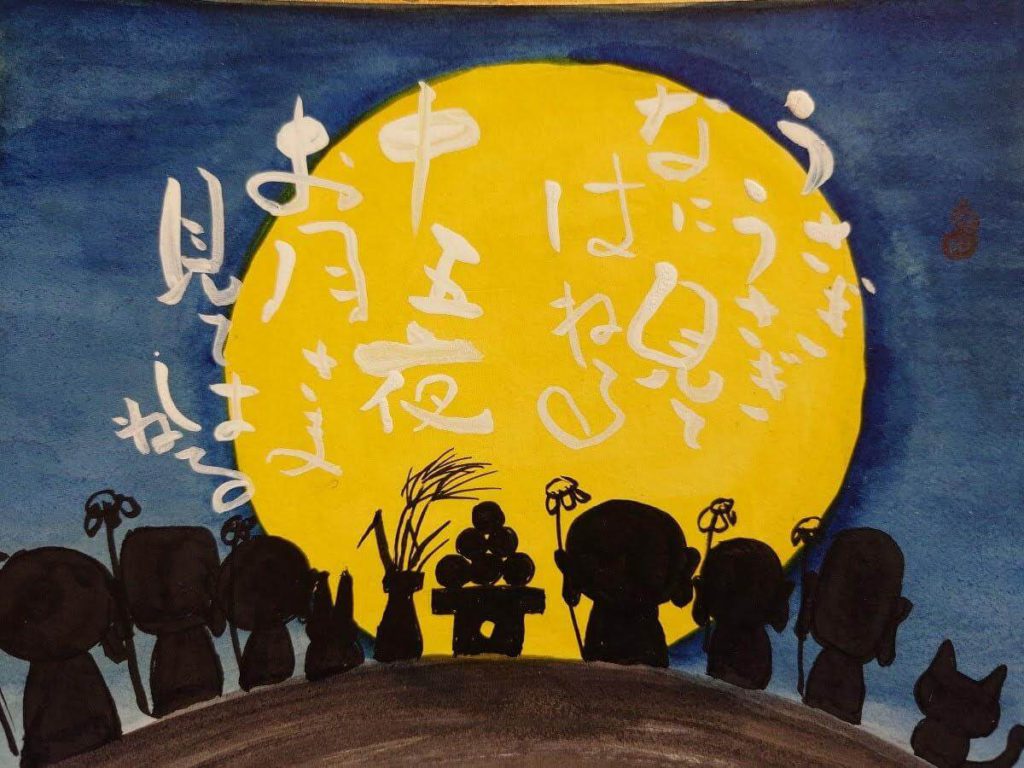
According to the lunar calendar, the months of July, August, and September were considered autumn. This “Chusyu” refers to August 15, right in the middle of these months. The moon rising on this day is so beautiful that it is called “Mid-Autumn Moon,” and moon viewing is held with dumplings and silver grass to show love to the moon.
Kami no Tsuki (神の月): God’s Month
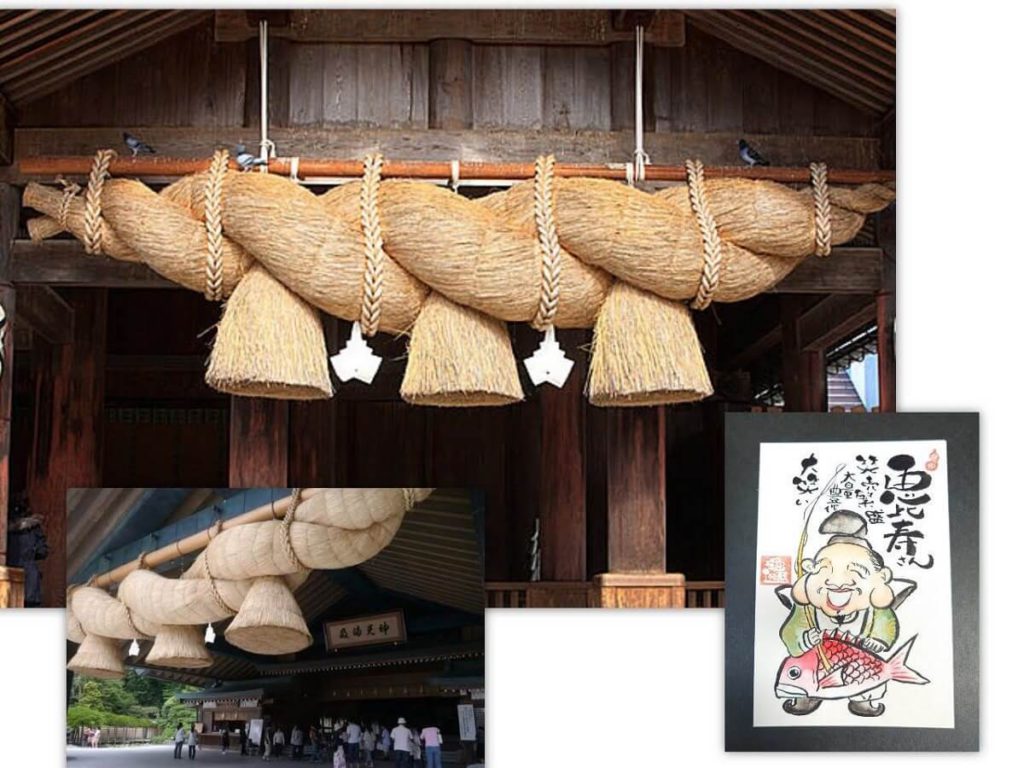
In Japan, the month of October in the lunar calendar is called “Kannazuki” (かんなづき :神無月) or “the month without gods”, because all the deities in Japan gather at Izumo Taisha Shrine during this month in our Shinto belief. The shrine parishioners became anxious when the deities were absent, and Ebisu-sama who is one of seven deities and other deities are enshrined as guardian deities.
Kiku hana hiraku (菊花開): Opening of Chrysanthemums
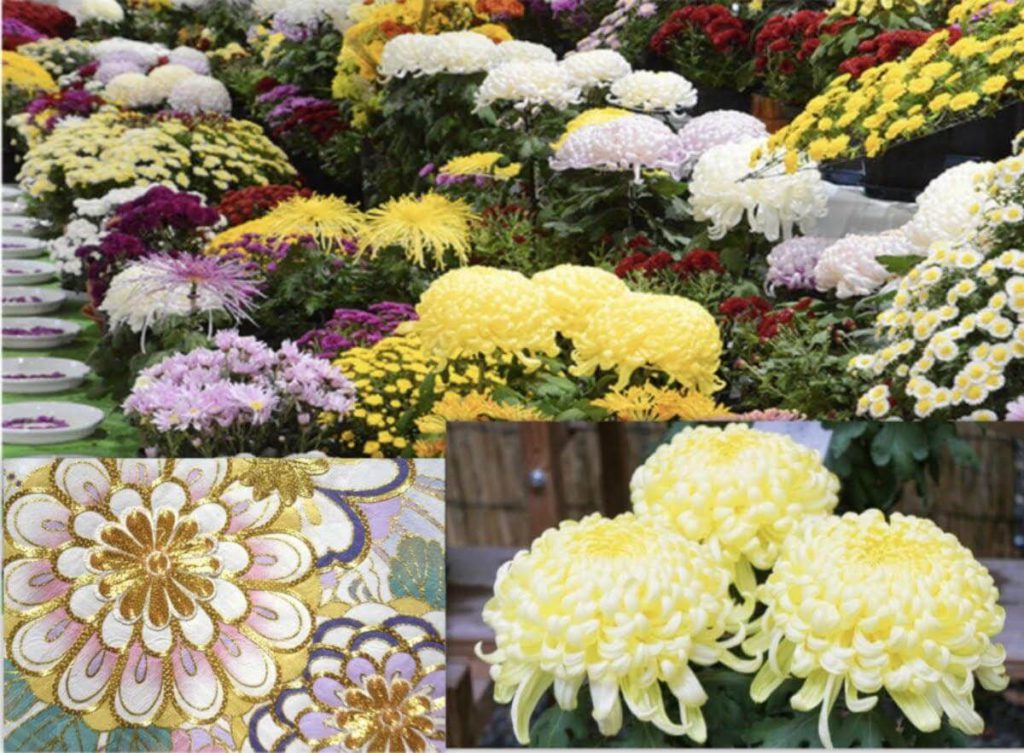
This word refers to the time when chrysanthemums are at their best. The clearing of the blue sky at such times of the year is called Kiku-bare (clear chrysanthemum sky). Chrysanthemums also have their names in the 72 seasons, and “Kiku no hana hiraku” is the name given to the season when chrysanthemums bloom and people love the flowers.
Did any of these haiku words interest you?
I think we Japanese have a very sensitive and wonderful sense of description. I believe that the Japanese have cultivated this sense in our daily lives, and that we enjoy the pleasure of imagining a scene from a single word in our poems. Although the seasons are becoming more and more ambiguous in Japan these days because of climate change, there are still so many beautiful scenes and words of the four seasons to describe them.
I would be happy if I could convey the splendor of how life is transmitted not only in places and things, but also in words that cannot be seen.
Thank you for reading to the end.
I’m a clay artist, and a master of Japanese calligraphy “Onore-sho”. I have my own shop in Ikaruga town, Nara, which is near Horyuji temple: world heritage site. And I’m a volunteer English tour guide. I enjoy learning English everyday.

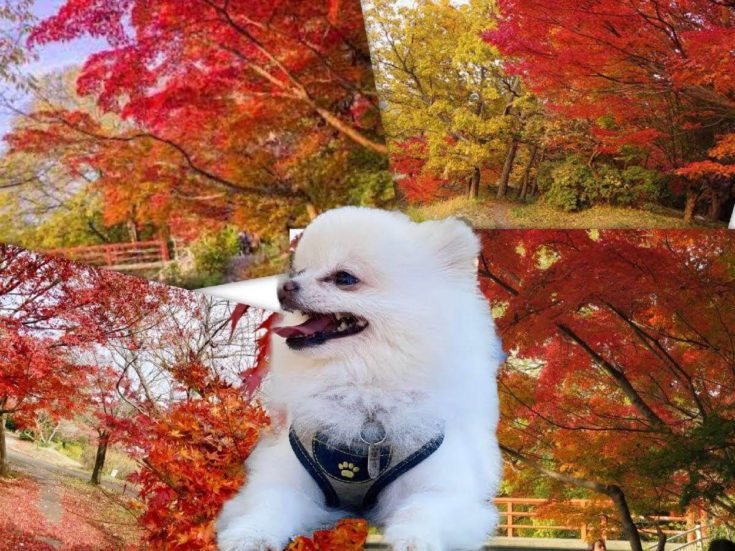
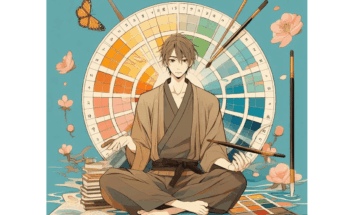


 HTJ has a YouTube page! Check it out
HTJ has a YouTube page! Check it out
Thank you for sharing the beautiful autumn haiku seasonal words! Each term captures an aspect of the season, and showcases our emotions. Japanese is a profoundly beautiful language that contains many meanings in short words! I love your pictures and photos, too!